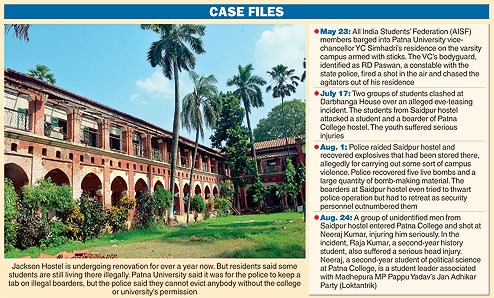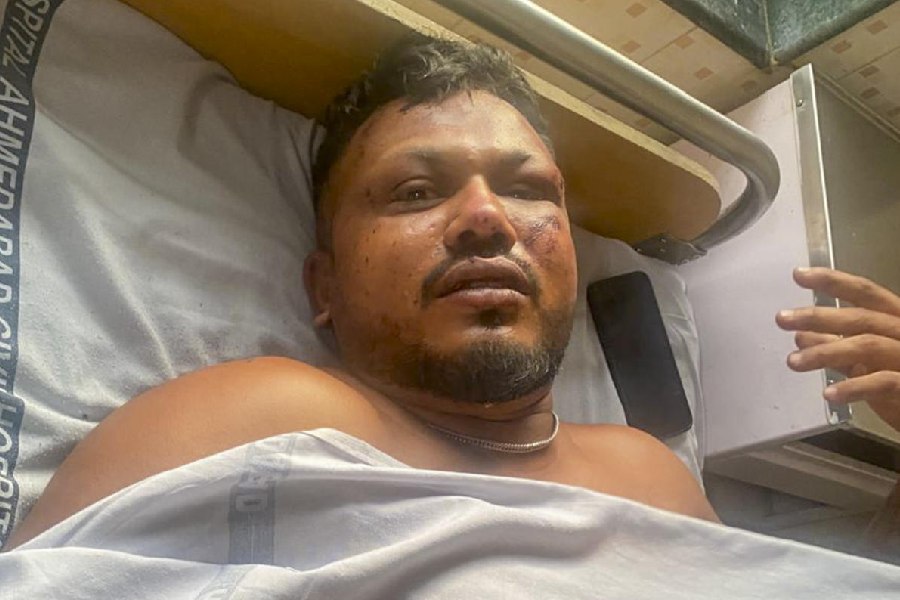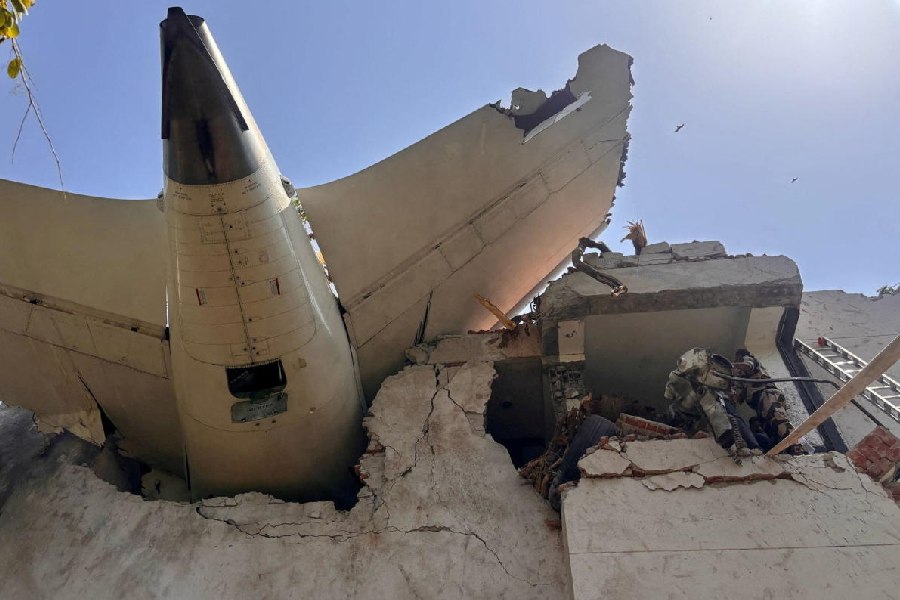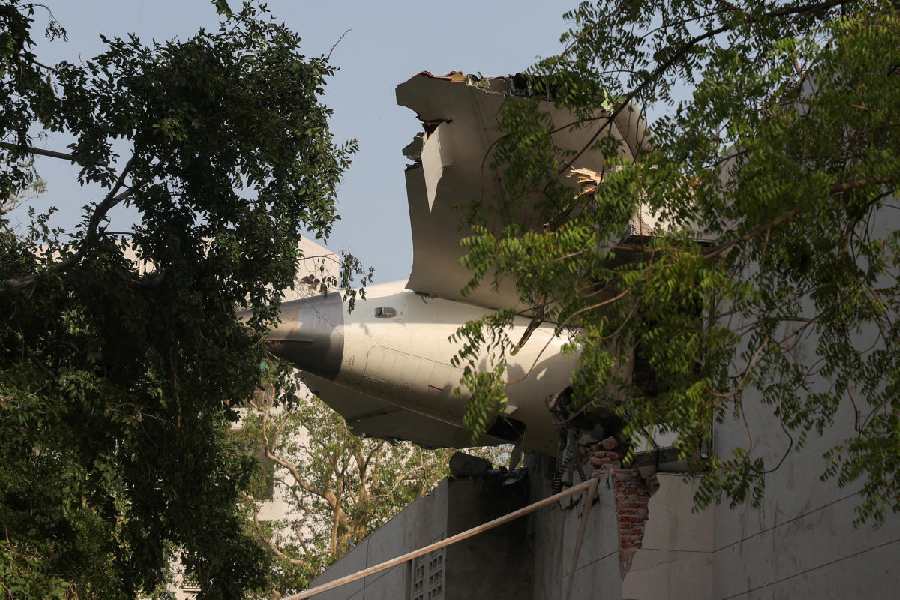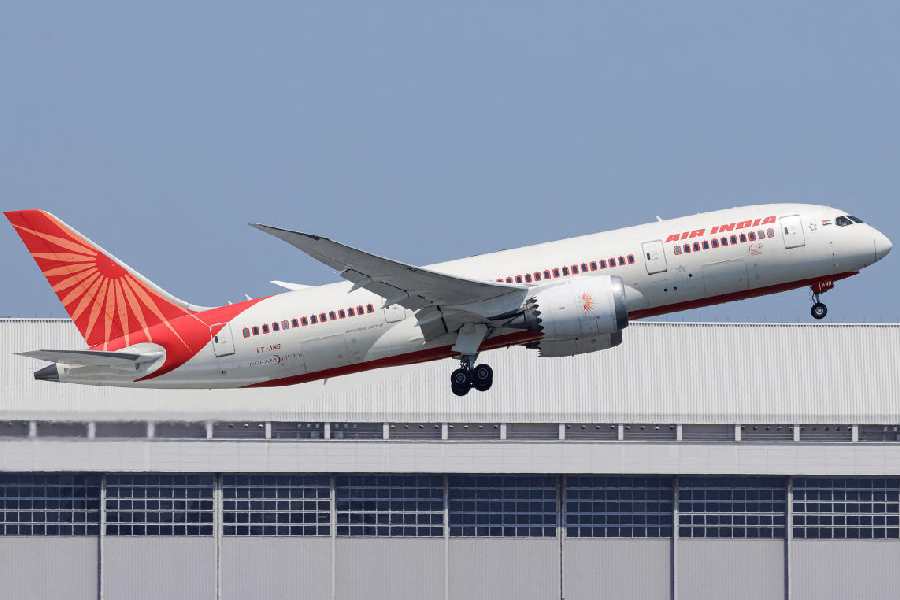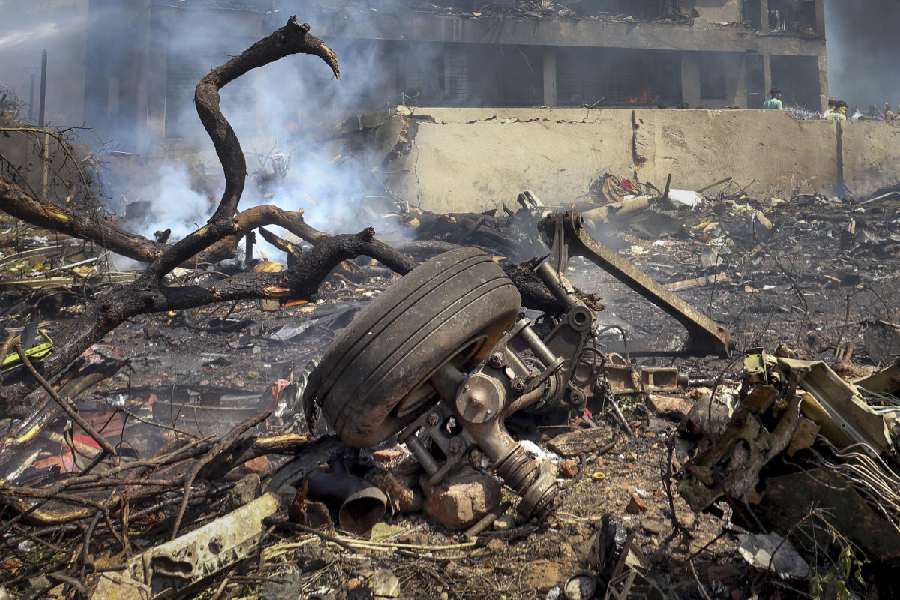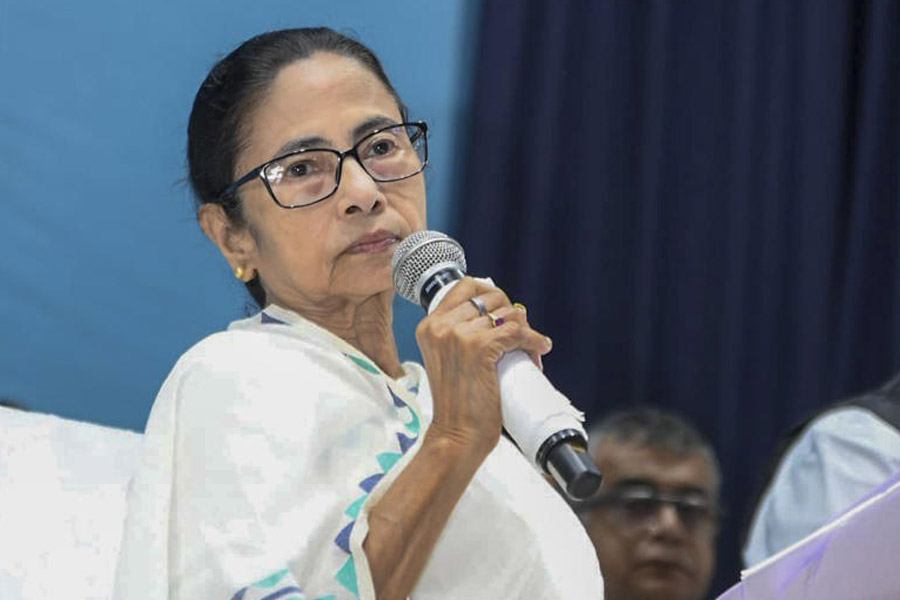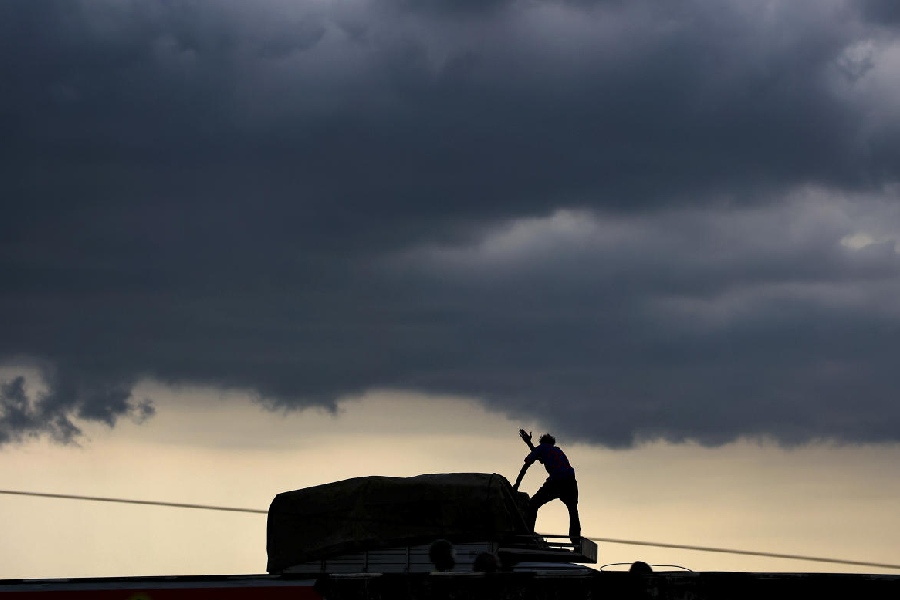
Phulwaria, Mohammad Abdul Haqim at his clinic in Bathua Bazaar and
green and saffron flags flutter near a village in Phulwaria.
Come to Gopalganj, the land of Lalu Prasad's birth, if the acerbic air of hatred all around chokes you.
The spirit of camaraderie and unity in the season of Dussehra and Muharram here will lift your spirits.
An electric pole sports two flags - one saffron, symbolising the spirit of Durga Puja, and another green, epitomising that of Muharram - fluttering together at Sangrampur-Gopal village, barely 5km north of Phulwaria, the RJD chief's ancestral home.
The electric pole with the flags, on the Meergaj-Phulwaria stretch, was not an isolated one. The Sangrampur-Gopal village had hundreds of such flags - green and saffron - fluttering in rows on both sides of the road, dotted by Hindu and Muslim homes arranged cheek by jowl.
In the middle of the road, there was a path leading to the temple of Goddess Kali and a dazzling pandal. Green and saffron flags adorned both sides of the path leading to the pandal too.
About a kilometre away, Bathua Bazaar was full of shops selling salt, edible oil, rice, wheat flour, dal and other things of daily use. All the shops, too, were decked up in saffron and green flags.
"Why are you surprised? Why are you clicking pictures? It is nothing unusual. This is how we - Hindus and Muslims - celebrate our festivals together. It is a matter of extreme happiness for us that Muharram and Dussehra have almost coincided this time," said Mohammad Abdul Haqim (81), adding: "This is how we have been, living and celebrating our festivals together for decades."
While three-day Muharram culminates on October 24, Dussehra was on October 22.
Haqim is an apt surname for Abdul. He is indeed a haqim (practitioner of Unani medicine). He had set up a clinic at the house of a Hindu, Harendra Gupta, among many shops at Bathua Bazaar.

Gopal-Phulwaria road. Pictures by Nalin Verma
"My patients come from both communities - Hindus as well as Muslims. Their problems, be it fever, headache, coughs or cold, have no bearing on the faith they profess. Neither do I treat Hindus with one medicine and Muslims with another. Their grief and happiness are alike too. Why should we then fight when we can celebrate life," asked Abdul.
A group of children - Hindus as well as Muslims - were on their way to a field to play banaithi (a game played with a stick that is something like a mace) and with swords. "Bir Yadav (20) defeated me at banaithi yesterday. I will defeat him today," Saif Akhtar (17) said. Bir giggled and said: "Saif has never defeated me even once. I will defeat him even today."
Rajendra Prasad (55), mukhiya of Sangrampur-Gopal, said: "Chidren, youth and the elderly - be they Hindus or Muslims - celebrate the festivals together in the spirit of amity and brotherhood. We Hindus gather in hordes to lend a shoulder to Tazia baba (miniature representations of the tombs of Hasan and Hussain made of bamboo and other wood and decorated with glossy papers of many hues) on Muharram, the day observed as Hassan and Hussein's martyrdom at the battlefield in
Karbala. Similarly, our Muslim brothers gather around Goddess Durga to break into songs in her praise and get prasad (offerings)."
Sudama Chouhan (60), a daily-wager by the roadside near Bathua Bazaar, said: "We offer khichdi and malida when Tazia is lifted and taken around our homes. Our Muslim brothers escort Durga idols to the beat of drums and cymbals when they are taken for immersion to the nearby Gandak river."
"De ray daadi lawang ki chhariya, main chaloon Karbala ko (O my grandmother. Give me a piece of clove... I am going to Karbala)," Sudama's wife hummed a Muharram song, while close by a Muslim woman covered in burqa (veil), sang: "Chham-chham baje la paijania, maata ke pairwa mein (Ghunghru is jingling at mother's feet)" - a song to celebrate the Puja spirit.
Naga Baitha (40), a Hindu Dalit, was seen eating with Mohammad Muslim at the latter's hut near the railway station Lalu Prasad got built in Phulwaria village when he was Union railway minister. "Muslim Bhai had invited me to share lunch today,"
Naga said. "We had puri and sabji for we both avoid non-vegetarian food for eight days during Navratri."
The bonhomie here, particularly in the backdrop of Dussehra and Muharram, complete Lalu's image of a fiercely secular leader. "If you are born and brought up here, the vice of hatred will find no place in your heart. Our land is a true pathshala (school) for communal amity. There was no communal tension here even during the Partition," said Congress candidate from Bhore Assembly constituency, Anil Kumar.
"In fact, there has never been any religious problem between Hindus and Muslims here," said Ramanand Yadav (45), Lalu Prasad's nephew, while patting a buffalo at Lalu's ancestral home. Lalu's Phulwaria village is inhabited by Hindus, Muslim, backward castes, Yadavs, Koeris, Telis, Dalits, Chamars, Dusadhs and the upper caste Bhumihars.
"It is not as if we don't ever fight. At times, tension builds up among us on the issue of land and houses. But I don't remember ever having fought on a religious issue," Ramanand said. Lalu's eldest brother Mangru Yadav's son Ramanand is a cowherd, testimony to Lalu's humble origins.
"I am proud of my uncle (Lalu) who has raised the izzat (prestige) of our family. He loves us and we all love him," Ramanand said.
Those who specialise in creating communal tension from which to gain electoral mileage would do best to look elsewhere.
At the same time it is not as if caste will play no role when the six Assembly segments - Gopalganj, Baikunthpur, Barauli, Kuchaikot, Bhore and Hathua - go to the polls on November 1.
"The upper caste Brahmins, Bhumihars, Rajputs and the vaisyas (businessmen) will vote for the BJP while the backwards - mainly the Yadavs, Kurmis and Koeris - will vote for the Grand Alliance," said Mohammad Parvez, a lawyer at the Gopalganj court. Another lawyer said: "The Koeri votes might get divided, but the Muslims are solidly united behind the Grand Alliance."
In Lalu's Phulwaria home, too, there are many admirers of chief minister Nitish Kumar. "Mere chacha Nitishji ko apna chhota bhai samajhte hain. Toh Nitishji bhi mere chacha hi hue (My uncle Lalu treats Nitish like his younger brother. So, Nitish is also like my uncle)," Ramanand said.
Several villagers in Lalu's village were all praise for the development work undertaken by Nitish, particularly in the context of roads, electricity, schools and health centres.
• Gopalganj votes on Nov. 1

